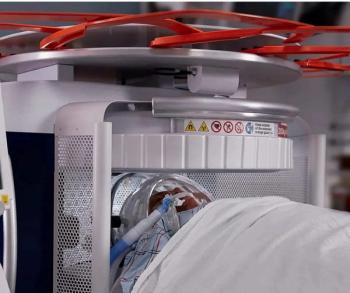
DTI digs deep into pediatric neurological development
Diffusion-tensor and fiber tract reconstruction MR imaging can track white matter abnormalities that may affect children’s cognitive skills. University of Texas researchers say the new tool could help monitor brain development in pediatric patients.
Diffusion-tensor and fiber tract reconstruction MR imaging can track white matter abnormalities that may affect children's cognitive skills. University of Texas researchers say the new tool could help monitor brain development in pediatric patients.
Myelomeningocele, also known as spina bifida, remains the leading cause of child paralysis in the world. The congenital abnormality usually occurs with Chiari II malformation. Patients with these conditions generally develop emotional and cognitive deficiencies later in life.
Early diagnosis and treatment, usually requiring surgery, are critical to avoid the most dreaded consequences. Unfortunately, standard diagnostic imaging techniques with x-ray, CT, and even MRI may have limited value.
DTI-based 3D fiber tract reconstruction has not been used previously for detection of Chiari II malformation. The technique could provide noninvasive diagnosis of this and other anomalies affecting the white matter tracts of the limbic system.
It could also help physicians trace the relationship between detectable anomalies of the limbic tracts and formal measurements of learning and memory in children with myelomeningocele and Chiari II malformation, according to principal investigator BehrozeVachha, Ph.D., a developmental disabilities researcher in the University of Texas Southwestern Medical Center's pediatrics department in Dallas.
Vachha and colleagues assessed 13 patients ages six months to 16 years with myelomeningocele and Chiari II malformation who underwent DTI and 3D fiber tract reconstruction. The researchers looked for limbic tract anomalies and their correlation with learning and memory deficiencies.
They confirmed fiber abnormalities in the limbic system of 11 patients with these conditions. They also found a significant association between fornix or cingulum abnormalities and memory and learning problems in these patients (Radiology 2006;240[1]:194-202).
The children and teenagers had defects affecting the fornix and cingulum, including aberrant cingulum fibers. Six patients had memory deficits and atresia, and four had learning deficits and hypoplasia of crura and fornices.
Five out of six patients with memory deficits and three out of four with learning deficits had hypoplasia or atresia of cingulum. A Wilcoxon rank sum test confirmed significantly poorer performance for nonverbal immediate recall tasks in patients with anomalies of the fornix compared with those with no such anomalies.
The small sample size and other constraints limit the statistical value of the study for larger populations of children with myelomeningocele and Chiari II malformation. And the assumption of a close relationship between learning and memory deficits and insult to a single neural structure such as the cingulum or fornix in these patients could be an oversimplification, given the complex neural circuitry involved in memory and learning, the researchers said.
Further studies using DTI and fiber tract reconstruction should provide a better understanding, however, of the neuropathologic characteristics of patients with myelomeningocele and Chiari II malformation. Conclusive data on the links between anatomic abnormalities and cognitive functions could also establish DTI's prognostic value in these patients, they said.
For more information from the Diagnostic Imaging archives:
Newsletter
Stay at the forefront of radiology with the Diagnostic Imaging newsletter, delivering the latest news, clinical insights, and imaging advancements for today’s radiologists.


























